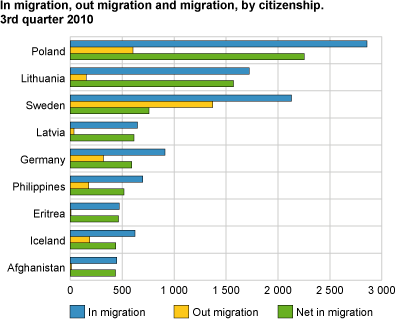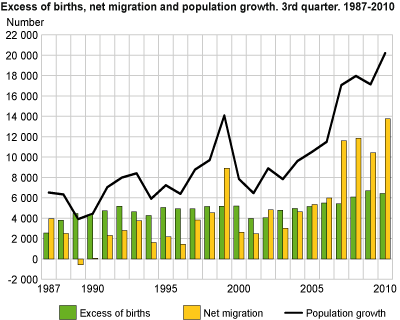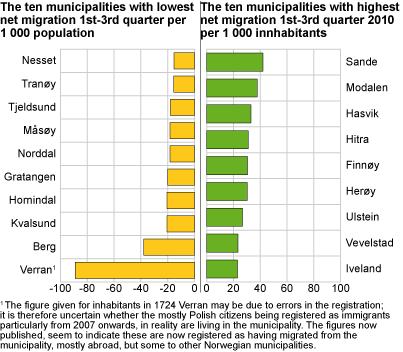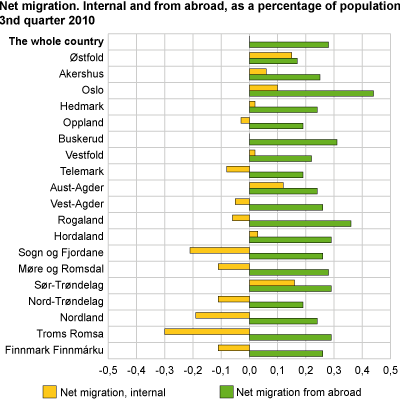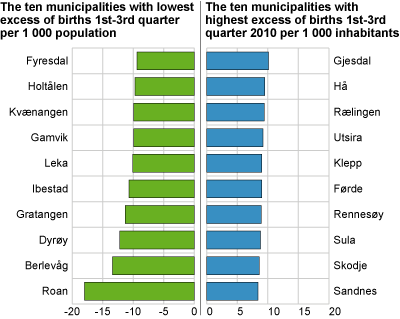Content
Published:
This is an archived release.
Population reached 4.9 million in 3rd quarter
The population of Norway is now 4 908 100. Population growth this quarter was higher than ever before due to immigration.
After a decrease in the population growth over the last three quarters, the population grew by a total of 20 200 or 0.41 per cent in the 3rd quarter. The population growth in this quarter was higher than it has been in any previous quarters. Increased immigration is the main reason for the growth. Immigration from abroad was 23 100, which is the highest number in a quarter ever.
Number of Poles immigrating remains high
Poles and Swedes are at the top of the list of foreign citizens who immigrated, with 2 900 and 2 100 persons respectively, and these are followed by Lithuanians. At the same time, many Swedes emigrated. Therefore the Poles and the Lithuanians top the list of net migration.
During the last two years, the emigration has been rising. In the 3rd quarter this year, 1 000 persons more than in the same quarter last year emigrated, but since immigration has increased much more than emigration, net immigration is now greater than in 2007 and 2008, which was the previous historical peak in net migration.
High number of births continues
The number of births decreased slightly in the 3rd quarter of 2010 compared to the 3rd quarter last year, but is still at a high level, with more than 16 000. The same applies to all the first three quarters as a whole this year. The counties of Oslo and Rogaland had the largest excesses of birth in the 3rd quarter, while Hedmark and Oppland had a birth deficit.
The largest excess of birth in absolute figures is found in the municipalities with the largest cities, but in relative terms, the excess of birth is higher in the municipalities in Rogaland and Western Norway in general. In the east, Rælingen is the only municipality that is in the top 10, with 9.4 births per 1 000 inhabitants.
The number of deaths has been relatively stable since 2004.
The population increased in 2621 municipalities and decreased in 1611 municipalities in the 3rd quarter.
Largest migration surplus in Oslo
Looking at migration as a whole, both domestic and migration, to and from abroad, Oslo had the largest immigration surplus in the 3rd quarter, with 3 200. Nearly a quarter of all immigrants in the 3rd quarter this year came to Oslo. After that, we find the counties Sør-Trøndelag and Aust-Agder with the highest immigration surplus relative to the population. All counties, except Troms, which had a net out-migration of 20, had a migration surplus in the 3rd quarter.
The domestic migration surplus, in relation to the population, was highest in Sør-Trøndelag, Rogaland, Aust-Agder and Oslo. Troms was the county with the greatest migration loss, followed by Sogn og Fjordane and Nordland.
Tables:
The statistics is published with Population.
Contact
-
Statistics Norway's Information Centre
E-mail: informasjon@ssb.no
tel.: (+47) 21 09 46 42

